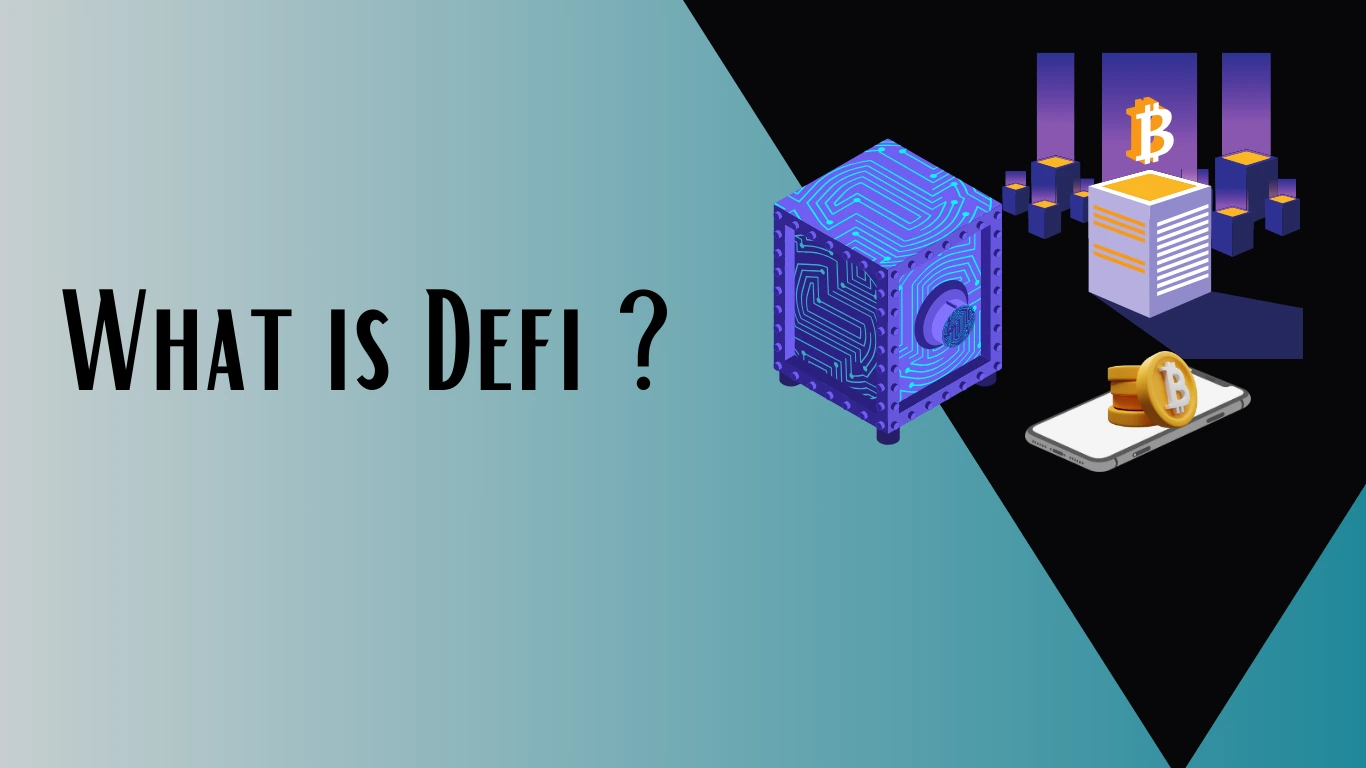What is Defi?

Introduction
DeFi (Decentralized Finance) has been around for more than two years since its inception in 2020. Since then, we've seen hugely successful DeFi companies like UniSwap, which aims to decentralize trade and finance, as well as new ways to earn interest in the bitcoin space. However, there are still challenges to sort out in such a young industry, as we saw with Bitcoin (BTC). As a result, DeFi 2.0 has become a generic term for a new generation of decentralized apps (DApps).
What is DeFi 2.0?
DeFi 2.0 is an initiative aimed at enhancing and resolving the issues prevalent in the first generation of decentralized finance (DeFi). While DeFi made financial services accessible to anyone with a cryptocurrency wallet, it still faces significant challenges. DeFi 2.0 builds on these foundations, incorporating lessons learned and improving protocols for better scalability, security, and efficiency.
For example, liquidity pools (LPs), a cornerstone of DeFi, enable users to earn fees by staking token pairs. However, they expose providers to risks like impermanent loss, where shifts in token price ratios lead to financial loss. DeFi 2.0 introduces innovative solutions like impermanent loss insurance, which incentivizes liquidity provision while reducing risk.
Moreover, it responds to emerging regulatory requirements, such as KYC (Know Your Customer) and AML (Anti-Money Laundering), ensuring compliance while maintaining the decentralized ethos.
Challenges Addressed by DeFi 2.0
Before diving into specific use cases, it’s important to understand the issues DeFi 2.0 seeks to solve. Many of these are fundamental challenges of blockchain and cryptocurrency:
- Scalability: High traffic blockchains often experience slow speeds and high gas fees, making DeFi transactions costly and inefficient.
- Data Quality: Financial products reliant on external data require improved oracles (data providers).
- Decentralization: While decentralization is a goal, many DeFi projects lack robust DAO (Decentralized Autonomous Organization) structures.
- Security: Users often risk large sums on smart contracts they don’t fully understand, making security audits critical but not foolproof.
- Liquidity Fragmentation: Liquidity is scattered across multiple blockchains and platforms, leading to inefficiencies and locked capital.
Why Is DeFi 2.0 Significant?
DeFi 2.0 strives to lower barriers to entry, democratize access to financial services, and reduce risk for users. It provides opportunities for crypto holders to earn through innovative mechanisms, even if they lack access to traditional financial institutions.
The evolution of DeFi 2.0 not only addresses the above challenges but also enhances the overall user experience. By improving incentives and minimizing risks, it creates a more efficient and inclusive financial ecosystem.
Use Cases of DeFi 2.0
DeFi 2.0 is already being implemented across various blockchain networks like Ethereum, Binance Smart Chain, and Solana. Key use cases include:
- Maximizing Staked Funds:
DeFi 2.0 allows users to maximize the value of LP tokens by using them as collateral for loans or other investments, increasing returns without additional capital input.
- Smart Contract Insurance:
New protocols offer insurance against risks associated with smart contracts, providing peace of mind for users engaged in yield farming or other DeFi activities.
- Impermanent Loss Protection:
Innovative approaches, such as single-sided liquidity provision and fee-based insurance funds, mitigate the financial risks of impermanent loss for liquidity providers.
- Self-Repaying Loans:
Borrowers can secure loans without the risk of liquidation or the need to pay interest directly. Deposited collateral generates enough returns to gradually repay the loan.
Risks of DeFi 2.0 and Mitigation Strategies
While DeFi 2.0 aims to improve security and usability, risks remain:
- Smart Contract Vulnerabilities:
Even audited contracts can have backdoors or flaws. Users should conduct thorough research and remain aware of the risks involved in using DeFi products.
- Regulatory Changes:
Governments are increasing scrutiny of DeFi, and new regulations could impact projects and services. Staying updated on regulatory developments is crucial.
- Impermanent Loss:
Despite new protections, liquidity mining still carries significant risk, which cannot be entirely eliminated.
- Access to Funds:
Users must have technical knowledge to interact with smart contracts directly in case the DeFi platform's front-end becomes unavailable.
Conclusion
DeFi 2.0 builds upon the successes of its predecessor, offering innovative solutions to existing problems while enhancing efficiency and reducing risk. However, it has yet to reach its full potential. While the concept shows promise, it remains complex for many users, highlighting the need for greater accessibility and education. As DeFi 2.0 evolves, its ability to deliver on its promises will determine its role in reshaping the financial landscape.
Disclaimer
The information provided on this blog is for educational and informational purposes only. It is not intended to be a substitute for professional financial advice, investment recommendations, or individualized guidance. We encourage readers to conduct their own research and consult with qualified financial advisors before making any investment or financial decisions. The author and publisher are not responsible for any financial losses, risks, or damages incurred because of the information presented here. Investing and financial decisions involve risk, and past performance does not guarantee future results.